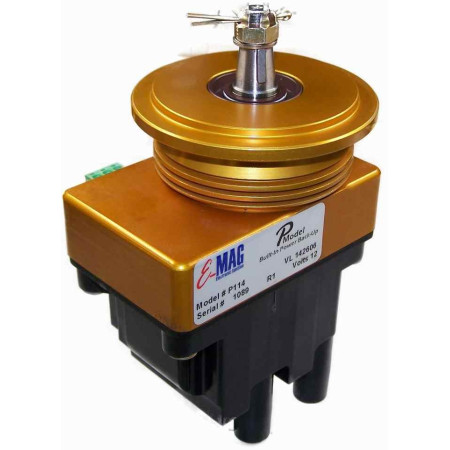





Of all the E-MAG innovations, the self-powering capability of the "P" Model is the most significant. It solves the largest single issue faced by all electronic ignitions - their need for an uninterruptible power supply.
![]()

Note: New installation requires a harness, and possibly a gear, depending on the application (See Accessories). Verify requirements before ordering.
Of all the E-MAG innovations, the self-powering capability of the "P" Model is the most significant. It solves the largest single issue faced by all electronic ignitions - their need for an uninterruptible power supply.
Power back-up strategies that a) compromise ignition effectiveness, b) solve only half the problem, or c) require additional maintenance are less than ideal. Next-Generation ignitions need a better solution. So what does a next-generation electrical back-up need to do?
The P Model Built-In Alternator
"Next-Generation" means improving on products that came before. Prior to the P model, electronic ignitions addressed the risk of electrical power loss by:
Installing back-up batteries, together with switching circuits, to A) engage the back-up battery when needed, and possibly B) keep the back-up battery charged. This solution:
Converting only one ignition to electronic, and maintain one magneto as a power failure back-up. This solution:
Maintaining dual magnetos and piggy-back an electronic ignition on each. In the event of electrical power loss, both ignitions can revert to magneto operation. This solution: